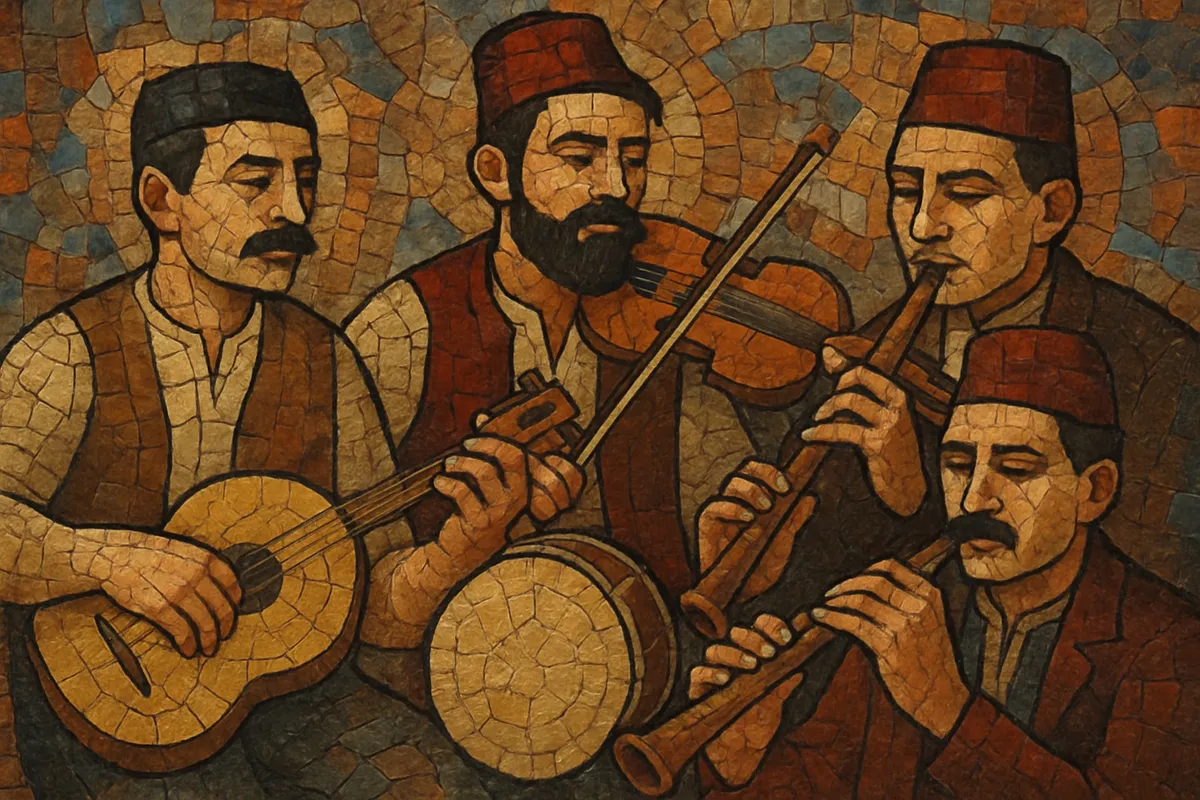Čalgija is an urban Macedonian music tradition that crystallized in the late Ottoman period and early 20th century in cities such as Skopje and Bitola. Its sound is defined by makam-based modal melodies, richly ornamented vocal lines, and asymmetric Balkan rhythms.
Typical ensembles feature oud (ud), tambura (long‑neck lute), violin or kemane, clarinet, kanun (qanun), and frame or goblet drums (daire, darbuka). Songs are often performed in Macedonian (alongside Turkish, Albanian, or Romani in historical repertoires), with lyrical themes of love, city life, and tavern culture.
Čalgija should not be confused with the later Bulgarian commercial pop-folk "chalga"; it is a distinct, older, acoustic, and tradition-grounded urban style rooted in Ottoman-era salon and coffeehouse music.
Čalgija emerged in the multiethnic urban centers of what is now North Macedonia, especially Skopje and Bitola. The genre grew from Ottoman court and city music practices, local urban folk songs, and shared Balkan modal traditions. Early čalgija ensembles (čalgii) played in meyhanes (taverns), salons, and private festivities, adopting Turkish makam systems, melismatic singing, and instruments like oud, kanun, and kemane alongside local tamburas.
In the 1910s–1930s, the repertoire stabilized around urban songs—longing ballads, dance tunes in odd meters, and pieces suited to intimate performance spaces. Musicians of Macedonian, Turkish, Albanian, and Romani backgrounds shared repertoires, facilitating a syncretic but recognizably Macedonian urban idiom.
After World War II, state ensembles, radio orchestras, and folklore festivals helped codify čalgija as a national urban tradition. Arrangers and orchestras associated with Radio Skopje/MRT recorded canonical versions, while stage ensembles (e.g., Tanec) brought čalgija to concert platforms. The music saw careful stylization—acoustic instrumentation, modal intonation, and asymmetric meters remained central.
From the 1990s onward, revivalist groups and conservatory-trained musicians revitalized čalgija with historically informed performance, while contemporary bands fused it with jazz, world music, and modern production. Today, čalgija continues as both a heritage practice and a flexible source for new urban-Balkan fusions.


